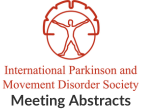Think of Gluten Ataxia:A rare but potentially reversible cause of progressive neurological disorder
Objective: To explore an unusual cause of ataxia in a patient with known Celiac disease. Background: Celiac disease is the established but not the only…A case of cerebellar ataxia caused by Pembrolizumab for Non-small cell lung cancer
Objective: We reported a case that cerebellar ataxia and decreased accumulation of right cerebellum at SPECT appeared after immunotherapy using immune-checkpoint inhibitor “Pembrolizumab” for Non-small…Inpatient vs outpatient workup of patients with ataxia and suspected paraneoplastic cerebellar degeneration: Does work-up location matter?
Objective: To assess the outcomes of patients with ataxia evaluated for paraneoplastic syndrome primarily in an outpatient or inpatient setting. Background: Although paraneoplastic ataxias are…Respiratory Complaints in Individuals with Spinocerebelar Ataxia Type 2
Objective: Verify the presence of respiratory complaints and dysfunction in individuals with spinocerebellar ataxia type 2 (SCA2).SCA2 is characterized by cerebellar ataxia, accompanied by dysarthria,…Cerebello-spinal stimulation in neurodegenerative ataxia: A randomized, double-blind, sham-controlled, crossover trial
Objective: The present study investigated whether a two-weeks' treatment with cerebellar anodal and spinal cathodal transcranial direct current stimulation (tDCS) could reduce symptoms in patients…Cerebellar Ataxia as a Manifestation of Hashimoto Encephalopathy
Objective: To characterize the clinical, laboratory and radiologic findings as well as prognosis of Hashimoto encephalopathy (HE) presenting with cerebellar ataxia Background: HE is a…Dissociative effects of thyrotropin releasing hormone on classical cerebellar ataxic signs and cerebellar adaptation in patients with spinocerebellar degeneration
Objective: To reveal effects of TRH [Thyrotropin releasing hormone (protirelin tartrate)] on the prism adaptation task in patients with spinocerebellar degeneration (SCD). Background: The cerebellum…Treatment with docosahexaenoic acid in Spinocerebellar Ataxia 38
Objective: To evaluate the safety and efficacy of docosahexaenoic acid supplementation in patients with spinocerebellar ataxia 38 (SCA 38), on clinical symptoms and changes of…Targeting the intracellular localization of Ataxin-3 as novel treatment strategy for Spinocerebellar Ataxia Type 3
Objective: Spinocerebellar ataxia type 3 (SCA3) or Machado-Joseph disease (MJD) is an autosomal-dominantly inherited neurodegenerative disorder caused by a CAG expansion in the ATXN3 gene…Is the cerebellum a good target for neuromodulation in movement disorders?
Objective: To assess the effects of dentate nucleus transcranial magnetic stimulation and deep brain stimulation on patients with cerebellar ataxia of different etiologies. Background: Cerebellar…
- « Previous Page
- 1
- …
- 5
- 6
- 7
- 8
- 9
- Next Page »
